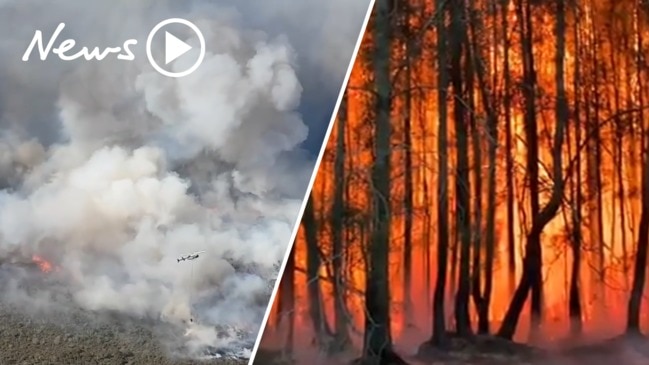Homes lost, lives threatened on Sunshine Coast in 1986
As firefighters catch their breath, homeowners check their properties and injured animals recover, there is one uncomfortable truth, writes Dorothy Whittington.

Opinion
Don't miss out on the headlines from Opinion. Followed categories will be added to My News.
THE devastating fires at Peregian on the Sunshine Coast last week saw history repeat itself — yet again.
It was in almost the same area and same time of year 33 years ago that homes were lost, lives threatened, and communities shattered by bushfires that flared from Noosa National Park to Sunshine Beach and south to Peregian.
Queensland bushfire season is far from over with no rain in sight
Blaze took widow’s home, but left some prized ‘treasures’ intact
Police then, also feared that a fire bug was responsible, although nobody was ever apprehended.
On September 18, 1986, 10 houses were destroyed, families were evacuated to the Sunshine Beach Surf Club, and firefighters considered themselves lucky that they had been able to save the new Sunshine Beach State School from flames fanned by strong westerly winds.
At the same time, Brisbane fire brigades were on full alert after more than 70 bush and grass fires ringed the metropolitan area.

From Dirranbandi to Muttaburra, Charleville to Injune, Ipswich to Emerald, bushfires have always been part of life in Queensland, which has fared better than other states in terms of losses and fatalities. Victoria’s 1983 Ash Wednesday fires cost 75 lives and 2400 houses, while its 2009 Black Saturday firestorm claimed 173 lives and more than 4000 structures.
Last week’s blaze in Lamington National Park which claimed Binna Burra Lodge and forced evacuations at O’Reilly’s Rainforest Retreat proved that even rainforest isn’t safe when it comes to dry conditions, high temperatures and strong winds.
In early October, 1936, a fire in Lamington National Park covered more than 400ha of forest as continued dry weather put “the whole countryside in very inflammable condition”, and 15 years later, a bushfire swept through a grove of 3000 year-old Macrozamia palms and burnt out about 800ha of the thick rainforest.
Koalas in a breeding colony had to be “liberated” and a national parks ranger “found it necessary to make his way some distance to a small creek and obtain water to throw over the bears to prevent them being distressed by the scorching heat”.
And while firebugs and foolish teenagers have been blamed for the latest blazes, responsibility once lay with the steam trains that not just threw sparks into tinder dry grass but carried careless passengers too.
In 1937, the Queensland Railway Department reported it was fully aware of the danger of fires being caused during the dry weather “in the country through which the trains move”.
It put up warnings of the necessity to strictly observe the rules, stressing that there was a great risk of fire from passengers throwing out lit matches and cigarette ends from carriages.
In December 1944, the Sydney to Brisbane mail train service was delayed by bushfires and “the express which would normally have arrived here today will not get in until 1.30am tomorrow”.
But it was this month in 1951, that Queensland went up in smoke.
The bushfires were declared to be the worst in Queensland history at that time — and 98 per cent of them had been started deliberately, either wittingly or unwittingly.
“Under soaring temperatures, fires were burning today in many parts of the State,” The Courier Mail reported.

A bushfire near Clermont was out of control, with heat so intense that firefighters “could not approach within 100 yards of the flames” and at Roma, strong winds fanned a bushfire along a 32km front. The risk would remain until remain fell.
Airline pilots reported that smoke enveloped a vast area bounded by Emerald, the Darling Downs and Casino in northern New South Wales.
No rain fell, temperatures soared and strong winds kept the fires burning throughout September and October 1951.
The Rural Fires Board reported: “Graziers are better prepared for fires than ever before, but the fires are worse than ever before. It is just a question of which will come out on top.”
In late October, a thick smoke haze was reported to the Brisbane Weather Bureau from almost all of its 78 stations throughout the State.
Queensland bushfires that summer cost insurance companies £430,330 ($10 million today).
Last week, the Bureau of Meteorology said the fire danger had dropped back to “high” due to more moderate winds and higher humidity. The more things change, the more they stay the same.


